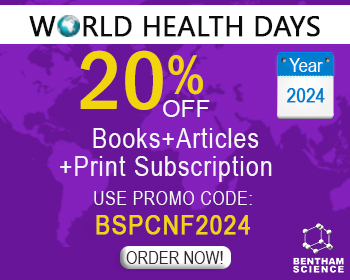Abstract
Vitamin D is a hormone involved in the regulation of important biological processes such as signal transduction, immune response, metabolic regulation and also in the nervous and vascular systems. To date, coronavirus disease 2019 (COVID-19) infection does not have a specific treatment. However, various drugs have been proposed, including those that attenuate the intense inflammatory response, and recently, the use of vitamin D, in clinical trials, as part of the treatment of COVID-19 has provided promising results. It has been observed in some clinical studies that the use of cholecalciferol (vitamin D3) and its two metabolites the circulating form, calcidiol or calcifediol (25-hydroxycalciferol, 25-(OH)-D), and the active form, calcitriol (1,25-(OH)2-D), in different doses, improve the clinical manifestations, prognosis, and survival of patients infected with COVID-19 probably because of its anti-inflammatory, antiviral and lung-protective action. In relation to the central nervous system (CNS) it has been shown, in clinical studies, that vitamin D is beneficial in some neurological and psychiatric conditions because of its anti-inflammatory and antioxidant properties, modulation of neurotransmitters actions, and regulation of calcium homeostasis between other mechanisms. It has been shown that COVID-19 infection induces CNS complications such as headache, anosmia, ageusia, neuropathy, encephalitis, stroke, thrombosis, cerebral hemorrhages, cytotoxic lesions, and psychiatric conditions and it has been proposed that the use of dietary supplements, as vitamin and minerals, can be adjuvants in this disease. In this review, the evidence of the possible role of vitamin D, and its metabolites, as a protector against the neurological manifestations of COVID-19 was summarized.
Keywords: Vitamin D, COVID-19, SARS-CoV-2, Neuroprotection, Neurological manifestations, Clinical studies.
[http://dx.doi.org/10.1016/j.endinu.2016.11.002] [PMID: 28440763]
[http://dx.doi.org/10.1016/S1132-8460(07)73506-7]
[http://dx.doi.org/10.1002/rmv.1909] [PMID: 27714929]
[http://dx.doi.org/10.1038/s41598-019-43462-6] [PMID: 31061425]
[http://dx.doi.org/10.33176/AACB-20-00006] [PMID: 33343045]
[http://dx.doi.org/10.1155/2015/145828] [PMID: 26000281]
[http://dx.doi.org/10.1016/j.clnu.2020.09.028] [PMID: 33087250]
[http://dx.doi.org/10.1007/s10654-013-9790-2] [PMID: 23456138]
[http://dx.doi.org/10.1016/j.cca.2010.05.037] [PMID: 20515678]
[http://dx.doi.org/10.3390/nu12040962] [PMID: 32235600]
[http://dx.doi.org/10.1007/s40259-013-0039-0] [PMID: 23649937]
[http://dx.doi.org/10.1371/journal.ppat.1002689] [PMID: 22589721]
[http://dx.doi.org/10.3390/ijms22105251] [PMID: 34065735]
[http://dx.doi.org/10.3390/nu7064240] [PMID: 26035247]
[http://dx.doi.org/10.1371/journal.pone.0011088] [PMID: 20559424]
[http://dx.doi.org/10.1093/tbm/ibaa055] [PMID: 32542349]
[http://dx.doi.org/10.1101/2020.04.24.20075838]
[http://dx.doi.org/10.1101/2020.05.01.20079376]
[http://dx.doi.org/10.3390/nu12051359] [PMID: 32397511]
[http://dx.doi.org/10.1016/j.dsx.2020.04.050] [PMID: 32413819]
[http://dx.doi.org/10.1001/jamanetworkopen.2020.19722] [PMID: 32880651]
[http://dx.doi.org/10.1016/j.jgar.2020.05.006] [PMID: 32474141]
[http://dx.doi.org/10.3892/mmr.2017.7546] [PMID: 28944831]
[http://dx.doi.org/10.1042/CS20200363] [PMID: 32255491]
[http://dx.doi.org/10.1042/CS20200492] [PMID: 32507883]
[http://dx.doi.org/10.1074/jbc.M705495200] [PMID: 17690094]
[http://dx.doi.org/10.1016/j.nut.2020.111017] [PMID: 33039952]
[http://dx.doi.org/10.1002/jmv.25848] [PMID: 32266994]
[http://dx.doi.org/10.1111/nbu.12108] [PMID: 25635171]
[http://dx.doi.org/10.3390/nu12040988] [PMID: 32252338]
[http://dx.doi.org/10.1212/WNL.0000000000010343] [PMID: 32759193]
[http://dx.doi.org/10.1212/WNL.0000000000009371] [PMID: 32300060]
[http://dx.doi.org/10.3390/nu12030821] [PMID: 32204554]
[http://dx.doi.org/10.1186/s10194-020-01090-w] [PMID: 32093657]
[http://dx.doi.org/10.1186/s12883-019-1483-3] [PMID: 31640594]
[http://dx.doi.org/10.1016/j.wneu.2019.05.250] [PMID: 31181357]
[http://dx.doi.org/10.1080/1028415X.2017.1317395] [PMID: 28475473]
[http://dx.doi.org/10.1179/1476830515Y.0000000019] [PMID: 25876214]
[http://dx.doi.org/10.23736/S0026-4946.17.04375-4] [PMID: 26365823]
[http://dx.doi.org/10.1136/jnnp-2018-320199] [PMID: 31296588]
[http://dx.doi.org/10.3945/ajcn.112.051664] [PMID: 23485413]
[http://dx.doi.org/10.1016/S0021-9258(19)60665-4] [PMID: 11991957]
[http://dx.doi.org/10.1080/19336950.2021.1905248] [PMID: 33825665]
[http://dx.doi.org/10.33594/000000182] [PMID: 31769259]
[http://dx.doi.org/10.1172/JCI88887] [PMID: 28240603]
[http://dx.doi.org/10.1111/acel.12951] [PMID: 30907059]
[http://dx.doi.org/10.1515/jbcpp-2017-0121] [PMID: 29420306]
[http://dx.doi.org/10.1016/S0303-7207(98)00117-8] [PMID: 9783903]
[http://dx.doi.org/10.1371/journal.pone.0215383]
[http://dx.doi.org/10.1016/j.molimm.2017.09.006] [PMID: 28926770]
[http://dx.doi.org/10.1016/j.yexmp.2020.104434] [PMID: 32240615]
[http://dx.doi.org/10.1080/15384101.2019.1669389] [PMID: 31544583]
[http://dx.doi.org/10.1159/000458427] [PMID: 28222424]
[http://dx.doi.org/10.3390/ijms21124215] [PMID: 32545801]
[http://dx.doi.org/10.1111/nan.12020] [PMID: 23336971]
[http://dx.doi.org/10.1016/j.neulet.2015.01.013] [PMID: 25576706]
[http://dx.doi.org/10.1095/biolreprod.116.138362] [PMID: 27075619]
[http://dx.doi.org/10.1016/0006-291X(77)91674-6] [PMID: 194588]
[http://dx.doi.org/10.2174/092986707781058823] [PMID: 17627525]
[PMID: 212325]
[http://dx.doi.org/10.1359/JBMR.0301257] [PMID: 15005856]
[http://dx.doi.org/10.1073/pnas.0402490101] [PMID: 15128933]
[http://dx.doi.org/10.1006/bbrc.2000.3050] [PMID: 10891358]
[http://dx.doi.org/10.1074/jbc.M311346200] [PMID: 15026419]
[http://dx.doi.org/10.1016/j.abb.2012.02.016] [PMID: 22446158]
[http://dx.doi.org/10.4049/jimmunol.178.1.145] [PMID: 17182549]
[http://dx.doi.org/10.1007/s00109-021-02036-8] [PMID: 33517471]
[http://dx.doi.org/10.1111/febs.12862] [PMID: 24893882]
[http://dx.doi.org/10.1038/s41430-020-0558-y] [PMID: 31959942]
[http://dx.doi.org/10.3390/ijerph16020189] [PMID: 30641860]
[http://dx.doi.org/10.1186/s13075-021-02532-9] [PMID: 33397438]
[http://dx.doi.org/10.1016/j.gene.2021.145691] [PMID: 33961971]
[http://dx.doi.org/10.1172/JCI1050] [PMID: 9421488]
[http://dx.doi.org/10.1016/j.jsbmb.2019.105557] [PMID: 31783150]
[http://dx.doi.org/10.1016/j.cyto.2018.09.016] [PMID: 30455079]
[http://dx.doi.org/10.1126/science.1123933] [PMID: 16497887]
[http://dx.doi.org/10.4049/jimmunol.170.11.5382] [PMID: 12759412]
[http://dx.doi.org/10.1073/pnas.121172198] [PMID: 11371626]
[http://dx.doi.org/10.3945/ajcn.115.120873] [PMID: 26864360]
[http://dx.doi.org/10.7759/cureus.2741] [PMID: 30087817]
[http://dx.doi.org/10.1016/j.jsbmb.2016.08.004]
[http://dx.doi.org/10.1172/JCI106538] [PMID: 4322721]
[http://dx.doi.org/10.1210/jc.2010-2230] [PMID: 21177785]
[http://dx.doi.org/10.1038/nrendo.2013.226] [PMID: 24247221]
[http://dx.doi.org/10.3892/ijmm.2012.1101] [PMID: 22922938]
[http://dx.doi.org/10.3390/nu12020342] [PMID: 32012987]
[http://dx.doi.org/10.1152/ajpendo.00226.2017] [PMID: 28978546]
[http://dx.doi.org/10.1016/j.freeradbiomed.2015.03.011] [PMID: 25801292]
[http://dx.doi.org/10.1016/j.ejmech.2020.112891] [PMID: 33032084]
[http://dx.doi.org/10.1016/0014-5793(93)81809-E] [PMID: 8325381]
[http://dx.doi.org/10.1038/s41598-021-90605-9] [PMID: 34045549]
[http://dx.doi.org/10.1016/j.placenta.2013.12.002] [PMID: 24374095]
[http://dx.doi.org/10.1093/ajh/hpt160] [PMID: 24025724]
[http://dx.doi.org/10.1152/ajpcell.00568.2019] [PMID: 31940245]
[http://dx.doi.org/10.1016/j.steroids.2019.108532] [PMID: 31672627]
[http://dx.doi.org/10.1017/S0954422418000197] [PMID: 30326975]
[http://dx.doi.org/10.1038/s41586-020-2180-5] [PMID: 32225176]
[http://dx.doi.org/10.1007/s11239-020-02172-x] [PMID: 32519164]
[http://dx.doi.org/10.1126/science.abb2762] [PMID: 32132184]
[http://dx.doi.org/10.1016/j.cell.2020.02.052] [PMID: 32142651]
[http://dx.doi.org/10.1073/pnas.0809524106] [PMID: 19321428]
[http://dx.doi.org/10.3390/biomedicines8050129] [PMID: 32455629]
[http://dx.doi.org/10.1371/journal.pone.0025333] [PMID: 22031815]
[http://dx.doi.org/10.4049/jimmunol.181.10.7090] [PMID: 18981129]
[http://dx.doi.org/10.3390/nu10111656] [PMID: 30400332]
[http://dx.doi.org/10.1371/journal.pone.0065835] [PMID: 23840373]
[http://dx.doi.org/10.1136/thoraxjnl-2014-206680] [PMID: 25903964]
[http://dx.doi.org/10.1111/cen.14276] [PMID: 32621392]
[http://dx.doi.org/10.1186/s12967-021-02973-5] [PMID: 34246301]
[http://dx.doi.org/10.1016/j.jsbmb.2020.105751] [PMID: 32871238]
[http://dx.doi.org/10.1183/13993003.00607-2020] [PMID: 32269085]
[http://dx.doi.org/10.1038/s41419-020-03252-9] [PMID: 33293527]
[http://dx.doi.org/10.3892/mmr.2015.4685] [PMID: 26675943]
[http://dx.doi.org/10.1167/iovs.11-7605] [PMID: 21715350]
[http://dx.doi.org/10.1152/ajpgi.00398.2007] [PMID: 17962355]
[http://dx.doi.org/10.1080/10408398.2021.1951653] [PMID: 34384289]
[http://dx.doi.org/10.1080/10408398.2020.1841090] [PMID: 33146028]
[http://dx.doi.org/10.1016/S0140-6736(20)30183-5] [PMID: 31986264]
[http://dx.doi.org/10.1016/S0140-6736(20)30566-3] [PMID: 32171076]
[http://dx.doi.org/10.1007/s15010-021-01645-2] [PMID: 34228347]
[http://dx.doi.org/10.1093/ajcn/77.1.204] [PMID: 12499343]
[http://dx.doi.org/10.1016/j.jsbmb.2018.12.010] [PMID: 30611908]
[http://dx.doi.org/10.1007/s40618-021-01639-9] [PMID: 34273098]
[http://dx.doi.org/10.1210/clinem/dgab405]
[http://dx.doi.org/10.3390/nu13061760] [PMID: 34064175]
[http://dx.doi.org/10.3390/biomedicines9050509] [PMID: 34063015]
[http://dx.doi.org/10.1038/s41598-021-02701-5] [PMID: 34862422]
[http://dx.doi.org/10.3390/nu13020411] [PMID: 33525447]
[http://dx.doi.org/10.1186/s13063-020-04928-5] [PMID: 33371905]
[http://dx.doi.org/10.3390/nu12113377] [PMID: 33147894]
[http://dx.doi.org/10.1136/postgradmedj-2020-139065] [PMID: 33184146]
[http://dx.doi.org/10.1038/s41598-021-90189-4] [PMID: 34017029]
[http://dx.doi.org/10.1001/jama.2020.26848] [PMID: 33595634]
[http://dx.doi.org/10.3390/nu13072170] [PMID: 34202578]
[http://dx.doi.org/10.3390/nu12123799] [PMID: 33322317]
[http://dx.doi.org/10.2174/1389203721666200606220719] [PMID: 32504501]
[http://dx.doi.org/10.1016/j.jsbmb.2014.11.004] [PMID: 25448739]
[http://dx.doi.org/10.1016/j.neuroscience.2013.01.035] [PMID: 23352937]
[http://dx.doi.org/10.1016/j.neuroscience.2016.07.020] [PMID: 27450565]
[http://dx.doi.org/10.1016/j.neulet.2009.05.070] [PMID: 19500655]
[http://dx.doi.org/10.1007/s00213-009-1717-y] [PMID: 19921153]
[http://dx.doi.org/10.1016/j.ijdevneu.2017.07.002] [PMID: 28716540]
[http://dx.doi.org/10.1159/000486536] [PMID: 29346788]
[http://dx.doi.org/10.1016/j.yfrne.2012.07.001] [PMID: 22796576]
[http://dx.doi.org/10.1016/j.bbamcr.2012.06.023] [PMID: 22743040]
[http://dx.doi.org/10.1001/archgenpsychiatry.2010.96] [PMID: 20819988]
[http://dx.doi.org/10.1096/fj.07-9326rev] [PMID: 18056830]
[http://dx.doi.org/10.1016/j.neuint.2009.03.010] [PMID: 19576513]
[http://dx.doi.org/10.1007/s10072-018-3496-x] [PMID: 30062646]
[http://dx.doi.org/10.1038/s41581-018-0078-3] [PMID: 30455427]
[http://dx.doi.org/10.3233/JAD-150901] [PMID: 27031473]
[http://dx.doi.org/10.1017/S2040174416000428] [PMID: 27827293]
[http://dx.doi.org/10.1152/physrev.00014.2015] [PMID: 26681795]
[http://dx.doi.org/10.1093/labmed/lmaa066] [PMID: 32893866]
[http://dx.doi.org/10.3390/antiox10060971] [PMID: 34204362]
[http://dx.doi.org/10.1002/mds.28176] [PMID: 32484584]
[http://dx.doi.org/10.1111/ene.14912] [PMID: 33983673]
[http://dx.doi.org/10.3390/brainsci10050284] [PMID: 32397275]
[http://dx.doi.org/10.1007/s10072-020-04570-8] [PMID: 32638135]
[http://dx.doi.org/10.1017/ipm.2020.107] [PMID: 32912355]
[http://dx.doi.org/10.4103/jtccm.jtccm_5_20]
[http://dx.doi.org/10.1186/s12967-020-02488-5] [PMID: 32847594]
[http://dx.doi.org/10.1016/j.nfs.2020.06.001]
[http://dx.doi.org/10.1016/j.encep.2021.02.002] [PMID: 33820650]
[http://dx.doi.org/10.1016/j.psyneuen.2020.104869] [PMID: 32956989]
[http://dx.doi.org/10.21203/rs.3.rs-655827/v1]
[http://dx.doi.org/10.3390/ijerph18041653] [PMID: 33572328]




























